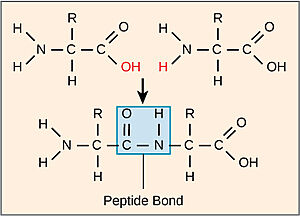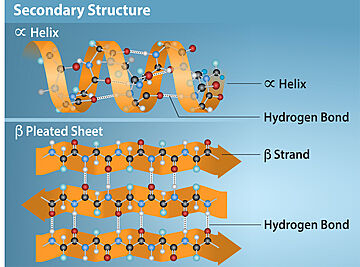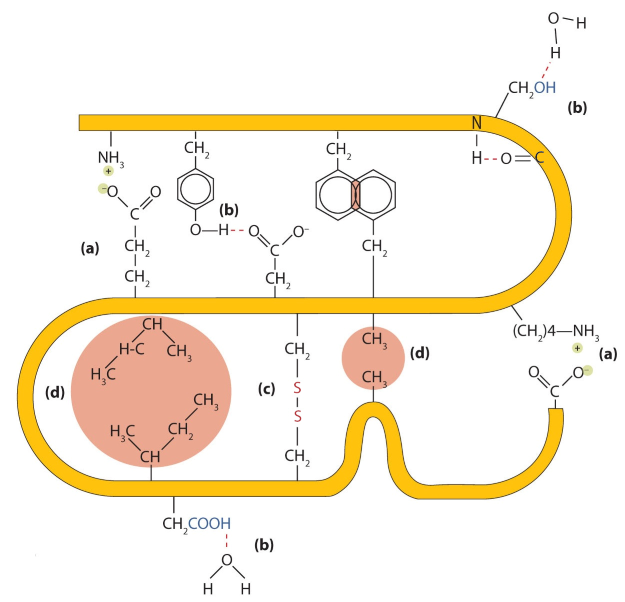Lactase (a protein)
From Proteopedia
| (9 intermediate revisions not shown.) | |||
| Line 1: | Line 1: | ||
| - | Lactase is an enzyme, i.e. a protein that catalyzes a chemical reaction. The function of lactase is to hydrolyze [[ | + | '''Lactase''' is an enzyme, i.e. a protein that catalyzes a chemical reaction. The function of lactase is to hydrolyze [[Lactose (a sugar)|lactose]], a disaccharide found in cow milk and milk products. Individuals who lack lactase have trouble digesting milk unless they take a medication like Lactaid, which contains lactase from yeasts or bacteria to supplement the lack of endogenous enzyme. |
As you read through this page, click on the green links to update the interactive 3D image. You can manipulate this image with by clicking and dragging in the 3D window (see [[Help:Viewing_pages|this tutorial]] for instructions). This page assumes basic textbook knowledge of protein chemistry. For a refresher, see the relevant section of the first chapters of any college biology textbook, e.g. [https://bio.libretexts.org/Bookshelves/Introductory_and_General_Biology/General_Biology_2e_(OpenStax)/01%3A_Unit_I-_The_Chemistry_of_Life/1.03%3A_Biological_Macromolecules/1.3.05%3A_Proteins this one]. | As you read through this page, click on the green links to update the interactive 3D image. You can manipulate this image with by clicking and dragging in the 3D window (see [[Help:Viewing_pages|this tutorial]] for instructions). This page assumes basic textbook knowledge of protein chemistry. For a refresher, see the relevant section of the first chapters of any college biology textbook, e.g. [https://bio.libretexts.org/Bookshelves/Introductory_and_General_Biology/General_Biology_2e_(OpenStax)/01%3A_Unit_I-_The_Chemistry_of_Life/1.03%3A_Biological_Macromolecules/1.3.05%3A_Proteins this one]. | ||
| + | |||
| + | __TOC__ | ||
==Structure== | ==Structure== | ||
| Line 7: | Line 9: | ||
Lactase is a protein. Like many proteins that function as enzymes (e.g. polymerase, amylase, kinase, peroxidase), its name ends in -ase. | Lactase is a protein. Like many proteins that function as enzymes (e.g. polymerase, amylase, kinase, peroxidase), its name ends in -ase. | ||
| - | Proteins are | + | Proteins are macromolecules assembled from amino acid building blocks. The amino acids are linked through condensation reactions, forming a linear chain (the <scene name='10/1056674/Primary/1'>primary structure</scene>). |
| + | |||
| + | <jmol> | ||
| + | <jmolButton> | ||
| + | <script>zoomto in</script> | ||
| + | <text>zoom in</text> | ||
| + | </jmolButton> | ||
| + | </jmol><jmol> | ||
| + | <jmolButton> | ||
| + | <script>zoomto out</script> | ||
| + | <text>zoom out</text> | ||
| + | </jmolButton> | ||
| + | </jmol> | ||
| + | |||
| + | You can also click on the +/- spin button under the spinning molecule, and then hover over parts of the structure to get the residue number and other information. | ||
| + | |||
| + | The amino acids are connected by peptide bonds. For this reason, proteins may also be called polypeptides. This protein has 1225 amino acids. Can you find the peptide bonds in <scene name='10/1056674/Peptide_bond/1'>this segment of three amino acids</scene> (showing the amino acids 833 through 835)? | ||
[[Image:Peptide bond.jpg|300px]] | [[Image:Peptide bond.jpg|300px]] | ||
| Line 15: | Line 33: | ||
[[Image:Secondary structure OpenStax.jpg|360px]] | [[Image:Secondary structure OpenStax.jpg|360px]] | ||
| - | Tertiary structure refers to the overall shape resulting from the assembly of secondary structure elements through <jmol> | + | <scene name='10/1056674/Tertiary/5'>Tertiary structure</scene> refers to the overall shape resulting from the assembly of secondary structure elements through interactions between their sidechains. The details are easier to see if you <jmol> |
<jmolLink> | <jmolLink> | ||
| - | <script> moveto 1.0 { 761 578 295 157.18} 1237.57 0.0 0.0 {-25.64624999999998 35.13546296296296 -40.1739398148148} 150.0601990776041 {0 0 0} 0 0 0 3.0 0.0 0.0; | + | <script> moveto 1.0 { 761 578 295 157.18} 1237.57 0.0 0.0 {-25.64624999999998 35.13546296296296 -40.1739398148148} 150.0601990776041 {0 0 0} 0 0 0 3.0 0.0 0.0;</script> |
| - | <text> | + | <text>zoom in</text> |
</jmolLink> | </jmolLink> | ||
| - | </jmol>. | + | </jmol> and just show <scene name='10/1056674/Tertiary/3'>part of the structure</scene>. |
[[Image:Tertiary_interactions2.png|300px|frame|Tertiary interactions include (a) ionic interactions, (b) hydrogen bonds, (c) disulfide bonds and (d) hydrophobic interactions.]] | [[Image:Tertiary_interactions2.png|300px|frame|Tertiary interactions include (a) ionic interactions, (b) hydrogen bonds, (c) disulfide bonds and (d) hydrophobic interactions.]] | ||
Current revision
Lactase is an enzyme, i.e. a protein that catalyzes a chemical reaction. The function of lactase is to hydrolyze lactose, a disaccharide found in cow milk and milk products. Individuals who lack lactase have trouble digesting milk unless they take a medication like Lactaid, which contains lactase from yeasts or bacteria to supplement the lack of endogenous enzyme.
As you read through this page, click on the green links to update the interactive 3D image. You can manipulate this image with by clicking and dragging in the 3D window (see this tutorial for instructions). This page assumes basic textbook knowledge of protein chemistry. For a refresher, see the relevant section of the first chapters of any college biology textbook, e.g. this one.
Contents |
Structure
| |||||||||||
Function
Like all enzymes, lactase first binds to its substrate lactose. While bound to the enzyme, lactose reacts with water, causing its hydrolysis into the carbohydrate building blocks galactose and glucose. The building blocks then leave the enzyme, which is ready for another lactose molecule to bind. In this way, a single enzyme can support millions of consecutive reactions. Lactase belongs to a larger group of enzymes called beta-galactosidases. These enzymes occur in animals, plants, fungi, bacteria and other organisms.



